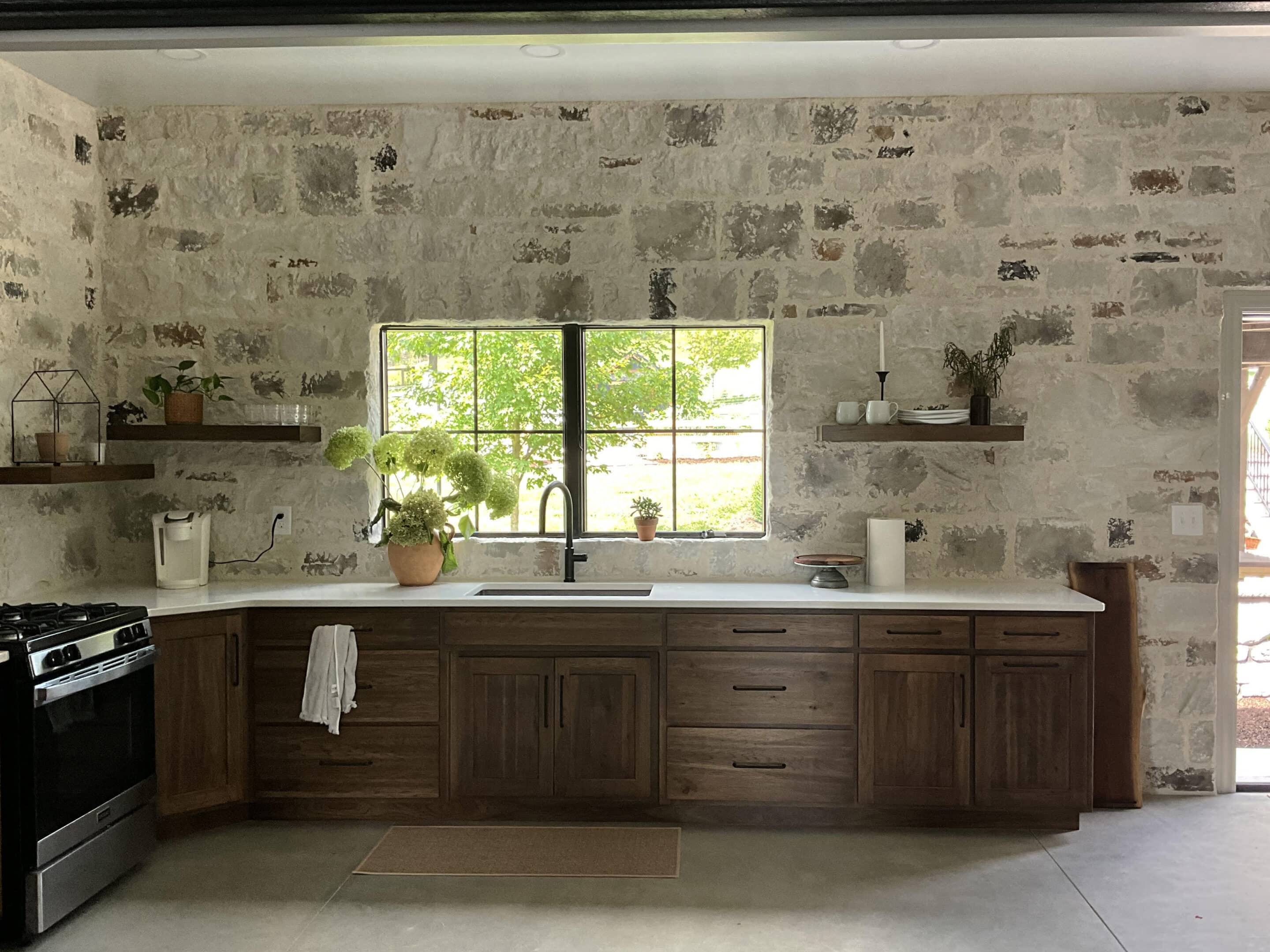The Environmental Impact of Natural Stone Alternatives

But sustainability isn’t always straightforward, and it’s also constantly evolving. For example, words like “natural” don’t always indicate true sustainability. On the other hand, many solutions that are sold as sustainable are anything but. Sustainability is not clear-cut, just like directly comparing the environmental impact of natural stone alternatives and natural stone.
In this article, we’ll cover some key insights you should know to better understand the relationship between natural stone, manufactured stone, and the earth.
The Environmental Impact of Natural Stone
Natural stone is sourced by way of quarrying, which is the process of removing minerals from the earth. By its nature, quarrying is an invasive process that often requires the removal of plants and animals from their natural habitats to build infrastructure and extract the stone. This can result in accelerated erosion, chemical runoff, pollution and other negative impacts on the environment. There are ways to reduce the environmental effects of quarrying, such as thoughtful site selection, land restoration and resource management.
Natural stone is also heavy, which means large amounts of fuel and energy must be consumed to extract, finish and transport it. This consumption is even higher when shipping natural stone internationally. Stone companies can mitigate this large carbon footprint by working with local quarries, but not every manufacturer is reasonably close to a quarry.
How Do Natural Stone Alternatives Affect the Environment
Engineered stone can have environmental impacts during production, but these differ from those of natural stone. Most natural stone alternatives, like Casa di Sassi stone veneer, are made from a mixture of Portland cement, mineral oxides and lightweight aggregates. While engineered stone has its own environmental footprint, it generally avoids some of the more intensive impacts of natural stone, such as quarrying large blocks, disrupting habitats, and consuming high amounts of energy for extraction and finishing. Sourcing materials locally rather than shipping them from overseas can further reduce its environmental impact.
After production, manufactured stone veneer offers advantages that natural stone doesn’t. Stone veneer is much lighter, so it doesn’t require as much fuel and energy to be transported – a major benefit for distributors without quarries nearby. Stone veneer is crafted for decorative use — offering the same timeless look as natural stone in a lighter, more versatile form
How Distributors Benefit from Natural Stone Alternatives
Distributors value stone veneer for a few key reasons. Stone veneer lowers costs and simplifies logistics, giving distributors a clear advantage over natural stone. Natural stone alternatives also help distributors manage their inventories more effectively, especially when they partner with a company like Casa di Sassi that helps them keep their best sellers reliably in stock. In addition, manufactured stone delivers consistency in design and color, so distributors can meet customer expectations without worrying about mismatched materials. Finally, its lighter weight makes it easier to store and handle, which helps reduce warehouse costs and simplifies transportation.
Natural Stone vs. Natural Stone Alternatives
Here’s a quick overview of some environmental pros and cons of natural stone and alternatives like veneer:
Pros
Cons
Stone Veneer
- Requires less energy to ship
- Can minimize impact when made locally
- Less intensive installation
- Various ingredients (and therefore their impacts) can vary
- Suitable only for non-structural applications
Natural Stone
- Local quarrying can reduce impact
- Suitable for structural applications
- Requires lots of resources to extract and ship
- More intensive to install
Browse Stone Veneer by Casa di Sassi
Headquartered in Apple Creek, Ohio, Casa di Sassi is a leading manufacturer of stone veneer. Casa di Sassi has been supporting stone distributors across the country since 2005, and we’d love to partner with you. If you’re interested in taking the next step, you can register to become a Casa di Cassi distributor here.

As we look to the future, we continually seek to innovate and grow. From pushing the limits on our creativity to developing new stone profile designs – to increasing the efficiency of our manufacturing processes – our team is dedicated to being a valuable stone veneer partner.
Recent Articles
Simplify Stone Veneer Inventory & Delivery with Casa di Sassi
Casa di Sassi has been partnering with the best stone veneer distributors across the country since 2005. Over the years, we’ve become intimately familiar with the inventory and fulfillment issues that keep distributors up at night. Problems like overstocking, shipping...
Stone Veneer for Luxurious Home Theaters
A home theater is a fantastic luxury option for adding a different flavor of relaxation to your house. But what if you want something a little different from the typical home theater? That’s where stone veneer tiles for home theater can be useful. Using stone veneer...
An Introduction to the Osso Color
We recently dropped our biggest product launch in Casa di Sassi history, an expansion that included two new stone veneer profiles and six new color options. Today, we’re zeroing in on one of those color options to discuss the inspiration behind it and provide some...
